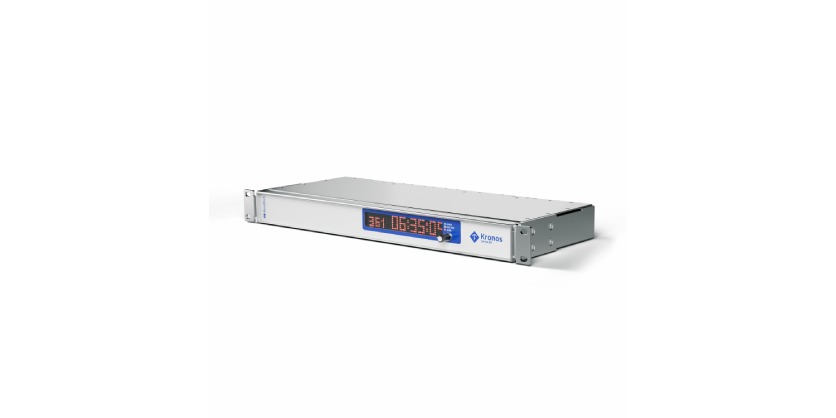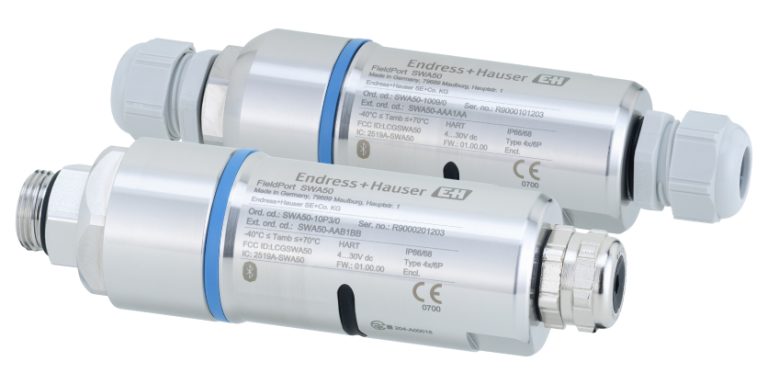More Precise Timekeeping Device Synchronizes Critical Utility Functions
June 3, 2024

Utility substations require extremely precise sub-millisecond time synchronization to facilitate improved location of faults, multi-rate billing, power-flow monitoring and event reconstruction
Precise timekeeping is fundamental to the function of the power grid and is used in many applications to improve reliability, reduce costs, predict and prevent faults, and check operation of devices. As such, the power grid requires precise time synchronization across system-wide devices, often with sub-millisecond accuracy.
To accomplish this, extremely precise satellite clocks serve as the time source for the network time protocol, and the information is distributed to the other devices on the network. In fact, satellite clocks are standard within electric utility substations and at certain distribution line locations.
“If all of your distribution points or substations have access to a satellite clock, they share a common source for correlation,” says Nathan Irvin, product manager of networking products at NovaTech Automation, a leading U.S. provider of automation and engineering solutions for power utilities headquartered in Quakertown, PA.
Despite being extremely accurate, utilities are continuously seeking even greater precision in timekeeping. Luckily, advancements in satellite clock design and programming can enhance accuracy. Currently, the accuracy is pushing towards achieving a margin of plus or minus 20 nanoseconds.
Utilities anticipate significant benefits from the improved accuracy, including more precise location of faults, multi-rate billing, power-flow monitoring, and event reconstruction.
Highly accurate satellite clocks
Satellite clocks work by connecting with orbiting satellites that maintain precise time using highly accurate atomic clocks. At the substation, the satellite clock receives time from the satellites in orbit. Utilizing advanced algorithms, it then accounts for external factors to provide an accurate time.
To improve the speed of connection and accuracy, some clocks provide multi-constellation support, which provides the ability to lock into any available satellites orbiting the planet. The satellites include GPS, maintained by the US but used globally; European Union’s global navigation satellite system GALILEO; China’s BEIDOU satellite navigation system; and Russia’s GLONASS global navigation satellite system.

The satellite clock serves network time protocol (NTP) to other devices on the network. These devices are typically “agnostic” and can be used as a time source for any device in the substation, regardless of brand.
Still, companies like NovaTech continue to invest in research and development to achieve even incremental improvements in clock accuracy in the sub-millisecond range.
Novatech has long served the utility industry. The company’s flagship product, Orion, is a communication and automation processor that can connect to nearly any substation device in its native protocol, perform advanced math and logic, and securely present the source or calculated data to any number of clients in their own protocol. Orion connects to IED’s such as microprocessor-based relays, meters, event recorders, and RTUs before connecting to a preexisting enterprise network or SCADA system.
“While any satellite clock can access satellites as a time source, the hardware and software within the satellite clock can make it more precise and accurate,” says Irvin. “So, in addition to our previous utility solutions, NovaTech offers timekeeping devices.”
The latest release is the Kronos Series 3. Named after Kronos, the God of Time, the satellite clock provides multi-constellation support and includes several upgraded features including antenna-cable delay compensation.
According to Irvin, “By building antenna cable-delay compensation into the algorithms for calculating time, along with multi-constellation support, we’re able to provide best in class accuracy.”
The Series 3 offers increased output flexibility for syncing devices with their optimal mechanisms, supporting both traditional legacy formats and the latest technologies, such as Ethernet over fiber.
The Kronos Series 3 supports PTP, NTP, and SNTP. Common legacy formats also supported include modulated and unmodulated IRIG-B over twisted pair, coax, or fiber; and PPS or PPM signals
The Kronos 3 supports Parallel Redundancy Protocol (PRP) and the High-availability Seamless Redundancy (HSR) within an ethernet network. These protocols are used to implement zero-loss redundancy on wired ethernet.
“Because it is critical to maintain time and communication between the various IEDs, utilities want to build their ethernet networks in a way that if one ethernet network goes down, there is a backup that the same traffic flows across,” says Irvin.
The net results of these upgrades are more precise time with sub-millisecond accuracy.
“In the prior version of Kronos, the master clock was able to achieve 60 nanosecond maximum time deviation while locked with the satellite. For Series 3, that drops to 20 nanoseconds,” says Irvin.
Satellite clocks must also be concerned with “holdover,” which refers to the ability of a clock or timing device to maintain its accuracy and continue functioning reliably even when it temporarily loses its external reference signal due to adverse weather conditions, interference, or other factors.
During holdover, the satellite clock relies on its internal oscillator or timing mechanism to continue providing timekeeping information until it can reestablish a connection with the satellites. For this, Kronos Series 3 offers enhanced accuracy through an optional oven-controlled crystal oscillator for better accuracy in longer holdover situations.
An oven-controlled crystal oscillator (OCXO) is a type of crystal oscillator that maintains its frequency stability by controlling the temperature of the crystal within a temperature-controlled oven. This helps to minimize frequency drift caused by temperature variations, resulting in better accuracy over longer holdover periods.
“In holdover, TCXO has typical drift of 9ms/day, whereas OCXO has a typical drift of less than 100µs/day. All clocks also support out-of-bounds alarm when the time drifts more than a specified value,” explains Irvin.
Utilities benefit
According to Irvin, there are many applications in the power grid that can benefit from more precise timekeeping.
Multi-rate billing: Typically required accuracy: 0.5 to 1 second.
To get better utilization of the grid, power utilities often charge different prices at different times of the day. The revenue meters of utility and consumer as well as the machines and processes at the user’s site need a common time-base.
“Although this application does not require exceptional time accuracy, it can benefit utilities that implement a multi-rate billing structure,” says Irvin. “To ensure they are charging the end customer accurately, they need to have a precise time source to know when they should switch the rates.”

Event reconstruction, sequence-of-events (SOE): Typically required accuracy: 1 to 5 ms (sub-cycle of the 50/60 Hz sine wave).
Events in the power grid need a spatial-temporal frame of reference (what happened where, what happened when) so that cause and effect can be correctly understood.
In the analysis of the large blackout of August 2003 that lasted almost 48 hours and affected 10 million people in the Northeastern and Midwestern United States and the Canadian province of Ontario, more time was spent ordering and manually time-tagging unsynchronized event recordings than on any other task.
“If some devices have a less accurate time source than others, then manual adjustments are required to properly reconstruct the events,” says Irvin. “Synchronizing the devices in the network with a satellite clock eliminates a lot of this type of work.”
Power-flow monitoring: Typically required accuracy: 1 to 10 μs.
The phase component of the so-called synchrophasors can be used to estimate the power flow and the stability of a power grid. The computation of synchrophasors is only possible if all the phasor measurement units (PMUs) use a common time base.
Traveling wave-based fault location: Typically required accuracy: better than 1 μs (for a 300 m fault location accuracy).
The location of faults can be accomplished by precisely time tagging wavefronts. Faults on the power transmission system cause transients that propagate along the transmission line as waves. Each wave is a composite of several frequencies, ranging from a few kilohertz to several megahertz, having a fast-rising front and a slower decaying tail.
“Composite waves have a propagation velocity and characteristic impedance and travel near the speed of light away from the fault location toward line ends. The location of faults can be accomplished by precisely time-tagging wave fronts as they cross a known point typically in substations at line ends,” says Irvin.
Integration of Renewable Energy Resources
To connect to the national grid, the electrical energy from solar panels, wind turbines, or batteries is passed through inverters or power electronic converters. These devices convert the DC (direct current) output from the sources into AC (alternating current) suitable for transmission and distribution on the grid. In order to integrate renewable energy into the grid effectively, it must be synchronized with the existing grid frequency.
“With all these distributed renewables, it is important for them to properly tie into the existing line. They need to match the waveform frequency accurately when they are adding power to the line,” says Irvin. “In addition to the synchronization, it’s important to accurately understand how much power is being added and when that power is added, which is where satellite clocks can play a crucial role in renewable integrations.”
For utilities, precision timekeeping plays a critical role in the operation and efficiency of the power grid, emphasizing the necessity for exact time synchronization across devices to enhance reliability, minimize costs, and facilitate fault prediction and prevention.
With the use of highly accurate satellite clocks providing time synchronization with the potential to reach accuracies within plus or minus 20 nanoseconds, utilities are on the verge of achieving even greater operational precision.
More Information
For more information on solutions for a continuously evolving power grid from NovaTech Automation, visit www.novatechautomation.com or call (913) 451-1880.






